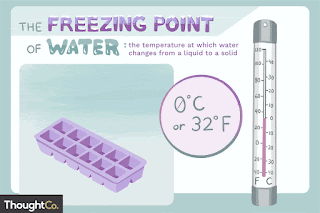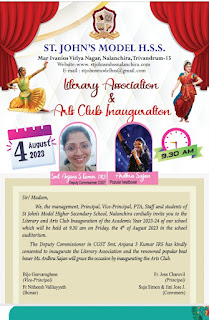Reflecting on My 15th Day of Teaching Practice at St. Mary's HSS Pattom
Teaching practice is an integral part of any teacher's journey towards becoming an effective educator. My experience at St. Mary's Higher Secondary School in Pattom has been a transformative one, and on the 16th day of my teaching practice, I had the opportunity to lead a class of 8th-grade students in a chemistry lesson. The focus of the day was teaching the concept of freezing point of water using engaging videos and images, in an activity-oriented classroom setting.
The Lesson: Engaging with the Freezing Point of Water
I walked into the classroom with a sense of anticipation and excitement, knowing that I was about to engage with a group of curious young minds. The topic for the day was the freezing point of water, and I had prepared a lesson plan that incorporated interactive videos and captivating images to make the concept come to life.
To begin, I started with a simple question, "What happens to water when it gets really cold?" This opened up a lively discussion among the students. Many shared their experiences of seeing ice form on puddles during cold winter mornings. I then introduced the term 'freezing point' and explained that it's the temperature at which water turns into ice.
The use of visuals played a crucial role in helping the students grasp the concept. I showed them videos of water turning into ice, time-lapse videos of ice crystals forming, and images of various objects frozen in ice. These visuals not only captured their attention but also made the abstract concept of freezing point tangible.
Activity-Oriented Learning
One of the highlights of the lesson was the hands-on activity. I distributed small containers of water and instructed the students to measure the temperature of the water using thermometers. We then placed the containers in a freezer and periodically checked the temperature. As the temperature dropped, the excitement in the classroom rose. Students eagerly waited for the moment when they could observe the water turning into ice.
Review Questions:
What is the freezing point of water?
Can you name some objects that you have seen frozen in ice?
Describe your experience during the hands-on activity. What did you observe as the temperature dropped?
Follow-Up Activities:
Research and create a poster about the various uses of ice in daily life.
Conduct an experiment to determine if different liquids freeze at different temperatures.
Write a short essay on the importance of understanding the freezing point of water in our daily lives.
Peer Observation and Feedback
As part of our supporting tasks for the day, I had the opportunity to observe my batchmate, Aravind, during his teaching session. This peer observation allowed me to gain insights into different teaching styles and techniques. Aravind's class was on the periodic table, and he used colorful visuals and mnemonic devices to help students remember the elements. After the class, we had a constructive feedback session, where we discussed each other's strengths and areas for improvement. This collaborative approach to learning and growth was invaluable.
Conclusion
The 15th day of my teaching practice at St. Mary's HSS Pattom was a rewarding experience. Teaching the freezing point of water to 8th-grade students in an activity-oriented class was not only fun but also a great learning opportunity for me as a student teacher. The engagement of students, use of multimedia resources, and peer observation added depth to the teaching-learning process. It's moments like these that reaffirm my passion for teaching and inspire me to continue honing my skills as an educator

.jpeg)


Comments
Post a Comment